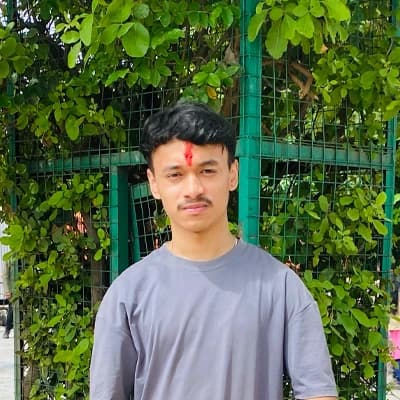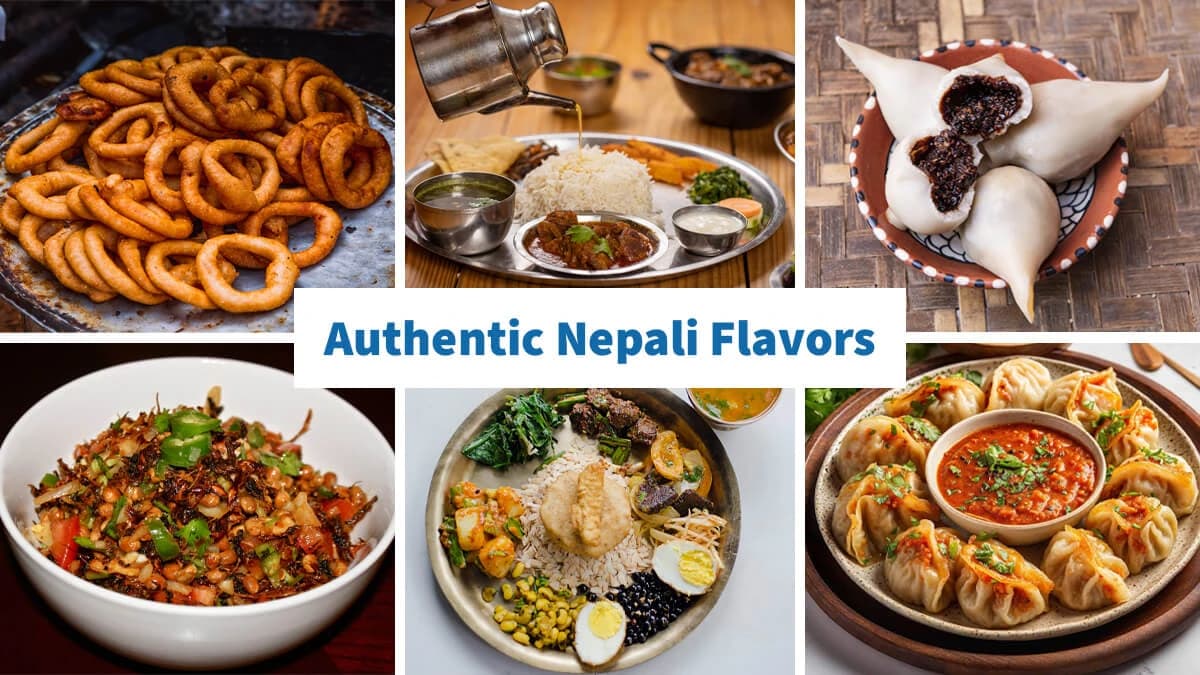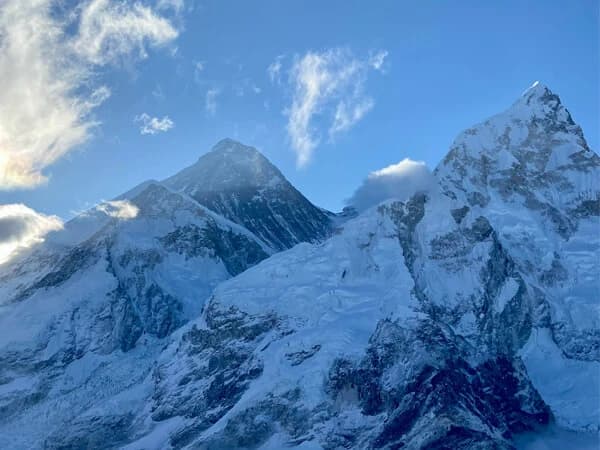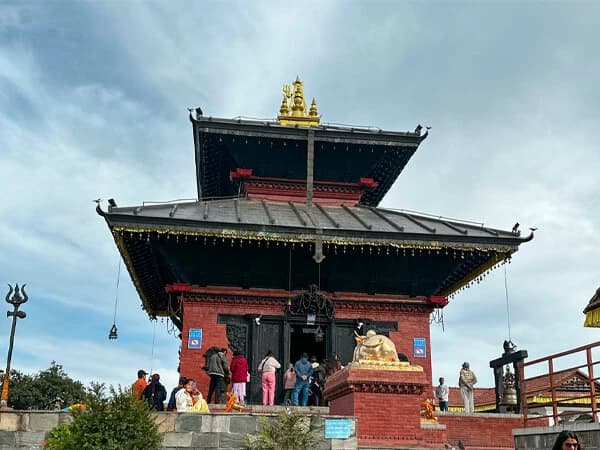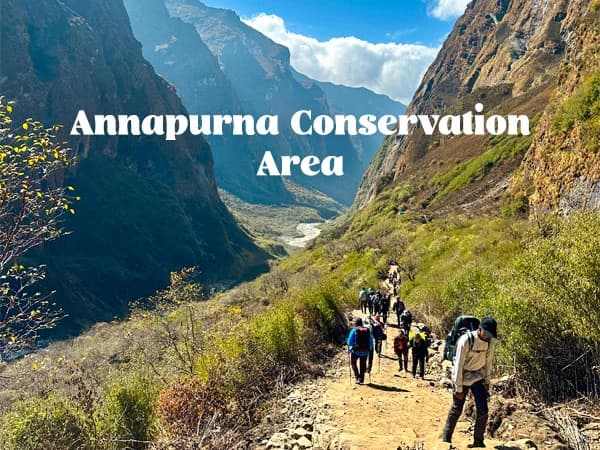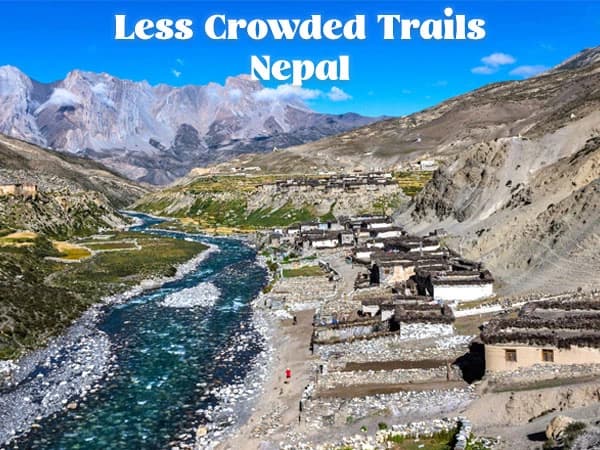Nepali Cuisine – A Culinary Journey Through Mountains, Culture, and Taste
The aroma of freshly cooked momo dumplings on a street side steaming rack. The taste of cooking lentils mixed with mountain breeze on long day's treks. The taste buds of Nepal are not just about food, they transport you to the very core of the Himalayas.
Must-Try Foods of Nepal | Nepali Cuisine Guide
What Makes Nepali Cuisine Special?
Nepali foods varies between geographical surroundings, culture, and tradition. Being that Tibetan, Indian, and local hill cultures have all affected the country, any type of food falls within the origin that the food comes from. The geographical climate and topography cause different ingredients and ways to prepare that change from one geographical location to another.
Mountainous areas prefer rich, flavorful cuisine such as dhido and gundruk, which are highly adapted to mountainous areas. The Terai plains prefer rice-based cuisine, lentils, and salads. Ethnic communities such as Newari, Thakali, and Magar provide local specialties by adapting specific cooking methods and specific spices.
Better even than nutrition, an identity, Nepali cuisine, served on one plate and cooked from the heart, to unite, not to divide, human beings. Every meal bears the history and culture of its inhabitants.
How safe are tourists from Nepali food?
Yes! Hygienic, local food is readily available at teahouses, homestays, and restaurants. Be careful, however, to avoid busy restaurants, especially street food restaurants.
What not to miss trying on a visit to Nepal?
Start with dal bhat, momo, and sel roti—and then explore further. There's a whole world to come to, flavorally, beyond the familiar options.
Be you walking on Annapurna trails or strolling the alleyways of Bhaktapur, every meal eaten within Nepal goes hand-in-hand with a story—of togetherness, hard work, and old traditions.
Which Nepali Dishes Should You Try First?
Here are seven dishes to taste and experience the best from Nepali cuisine:
Dal Bhat – The National Dish

Dal Bhat forms a major component of day-to-day cuisine in Nepal and is highly essential to trekkers. You can divide Dal Bhat into two main parts: dal, which is lentil soup, and bhat, which is steamed rice. The dish consists of various side dishes, thus constituting a full and nutritious meal.
Dal Bhat, a typical meal, consists of:
- Lentil soup (masoor or moong)
- Steamed rice
- Steamed vegetables (tarkari)
- Pickles (achar)
- Spinach or mustard greens.
- Optional: chicken or mutton curry for non-vegeterians
Amusing fact: The villagers have twice-a-day dal bhat, and they combine the meal using their right hand.
Best consumed: Everywhere—from street stalls to tea shops near Everest Base Camp.
Dal bhat is unique not just because it's healthy, but because it's prepared so many different ways and yet tastes wonderful. It's prepared differently everywhere, and everywhere there's an added flavor. The lentils, up in the hills, might be thicker and spicier, whereas on the plains, the flavor tends to be more mild and slightly sweet.
You traditionally consume this meal from your right hand, rotating the ingredients within your hand so that every bite has varying flavors and textures. You believe that this meal comes in handy while trekking through the mountains since it provides energy, heat, and local flavor.
Momo – Nepal's Favorite Dumpling

You won't feel whole during traveling to Nepal if you won't give momo a try, Nepal's most loved snack food. Momos consist of white flour dough that encases various kinds of fillings and are prepared by steaming or by frying them.
The dumplings, which are served steamed or fried, contain:
- Ground buffallo, chicken, or pork, or vegetables.
- Onions, garlic, and spices from Nepal.
They arrive accompanied by spicy tomato pickles and occasional clear soup. The forms vary by region—some are half-moons, and others rosebud-shaped.
Where to try:
- Momo Mania in Kathmandu
- Teahouses within the Langtang Valley.
Travel tips: Request "jhol momo" to have your momos served in spicy soup!
The flavor and shape change from one location to another. While in Kathmandu, momos are more or less crescent-shaped, in the east, they are leaf-shaped. They come in forms such as "jhol momo," which are soup dumplings that are delicious, and the new "open momo," which reveals the content inside. They have flavors that reveal the culture of Nepal, and one can sense this from each bite. Try momos from a street corner or from a warm cafe.
Sel Roti – The Festive Rice Ring

Sel Roti is an old homemade sweet that holds immense significance to Nepal and its culture, particularly among the Hindus. It resembles a doughnut, yet thinner and crisper in texture. Rice flour, sugar, and milk are combined to prepare the Sel Roti, and sometimes banana or cardamom to taste. As cooked in ghee or oil, the Sel Roti hardens on the surface while remaining chewy and soft inside. Its grainy texture distinguishes Sel Roti from other sweets.
Best served with:
- Achar (pickle)
- Milk tea or curry.
Cultural note: They tend to offer this to gods and ancestors on pujas.
You can purchase them from street shops, particularly on festival days.
This dessert is particularly favored on occasions such as Dashain and Tihar. Nearly every household prepares this to offer to gods and ancestors as an offering. However, this dessert is not a seasonal phenomenon and is visible throughout the year, on street corners and inside local dessert shops.
The sel roti comes accompanied by milky tea, yogurt, or spicy vegetable curry that has a mixture of sweetness and saltness. For tourists, enjoying sel roti goes beyond being just a snack since this connects them to one of Nepal's cultural festivities.
Samay Baji – A Newari Feast on a Plate

Samay Baji is a distinctive meal that's consumed on religious occasions within Newar delicacies from the Kathmandu Valley. The various dishes taste, feel, and look different and are presented beautifully to portray cultural customs.
Its a pretty plate that displays:
- Beaten rice (chiura)
- Spiced potatoes
- Fried egg
- Roasted soybeans
- Smoked buffalo meat (chhoila)
- Bara (lentil pancake)
- Garlic and ginger slices
Also, taste the local Newari rice beer (aaila) to make your experience whole.
Best consumed: traditional Newari restaurants within Bhaktapur, Kirtipur or Patan.
Samay Baji is not only food, but an exclusive experience on special occasions like festivals, birthdays, wedding, and rituals. Samay Baji offers numerous delicious dishes which put a smile on your face while relishing them, such as crispy chiura and grilled chhoila. It comes with a homemade rice beverage named aaila, which provides a distinguishable flavor of Newari cuisine. As you relish Samay Baji in Bhaktapur or Patan, you experience cooking traditions that date back centuries.
Yomari – The Sweet Dumpling of Gratitude

The Newar tribe prepares a very special dish named Yomari. When the rice is harvested, they make this for the Yomari Punhi festival. The meaning of the word "yomari" is "delicious bread" and this really suits this dish perfectly.
Contents:
- Rice flour mixture
- Coated with sesame seeds and coconut
- Symbolism: Its distinctive fish shape symbolizes good fortune.
You find them on Newari buildings or on December festivities. Restaurants offer them throughout the year.
The dumpling takes the shape of carp or fig, symbolizing good fortune and abundance. The dumpling is steamed and served piping hot, thus becoming an excellent snack during November and December, the cold months. The yomari is typically consumed within one particular season, yet most Newari restaurants within Kathmandu are open to offer yomari throughout the year. Its chewiness and sweetness content allow the locals to feel free, while tourists appreciate finding this new delicacy.
Gundruk – The Sour, Fermented Green Leaves

Gundruk is one traditional and common food from Nepal that most households include in their diets. It is made by fermenting leafy greens like mustard greens, radish greens, or cauliflower greens.
Why it's special:
- Fermented for days then sun-dried
- Rich in iron and healthy bacteria.
- Used to flavor soups or side dishes.
Trekking tip: The best thing to eat on a cold mountain hike.
You can purchase this from street markets, teahouses, or from a Thakali set meal.
Gundruk has a unique, sour taste that is both unique and tasty. It consists of several good bacteria and vitamins, and that's why homemade gundruk not only tastes good, but is healthy too. For example, a warm cup of homemade gundruk soup not only makes you feel warm on a winter day, but is good for health as well. As an ingredient or a side dish, gundruk displays the ability and innovation of Nepali cuisine.
Dhido – The Mountain Cuisine

Dhido is a porridge made with unleavened buckwheat, millet, or corn flour. The flour to prepare this meal should be soaked previously. This meal to many inhabitants, especially those who live on hills and rural parts of Nepal, is considered to be comfort food, and they tend to consume this meal instead of rice. The meal is gluten-free, highly nutritious, and one of the healthy organic foods.
Accompanied by
- Meat curry
- Gundruk
- Spicy tomato chutney
How to eat: Form a ball by hand, dip that ball into the curry, and take a bite.
You'll find it served in rural homestays and Thakali households. While trekking to Mustang or Dolpo, give dhido a try.
He serves this curry accompanied by gundruk, lentil soup, meat curry, or spicy tomato chutney. They take just a little bit by hand and place it on the other side dishes. Dhido is a type of food, yet farming and residing within the mountain regions of Nepal, too, it symbolizes. Thakali eateries and mountain treks occasionally allow tourists to taste mountain local delicacies and their own take on dhido.
How Does Cuisine Differ Between Nepal's Trekking Regions?
| Region | Signature Dishes | Highlights |
|---|---|---|
| Everest | Dal bhat, Tibetan bread, Sherpa stew | High-altitude comfort food |
| Annapurna | Thakali set, apple pie | Clean, balanced meals; great for energy |
| Langtang | Momo, thukpa, yak cheese | Tibetan influences |
| Terai | Sel roti, fish curry | Rice-dominant, warmer spices |
Where's good place to find good Nepali food?
- Kathmandu – You'll want to taste momo, samay baji, and yomari from Bhojan Griha or Newa Lahana, among others
- Pokhara – Enjoy lakeside eateries that specialise in daal bhat and dhido.
- Along the trail, all teahouses from Lukla to Langtang offer large meals that exhibit local flavors.
- Homestays enable you to experience local cuisine and live among local residents at Bandipur or Ghandruk.
How good is Nepali cuisine for vegetarians and vegans?
Yes! Veggies can easily substitute most Nepali dishes to make them vegetarian. Foods like momo, daal bhat, sel rot, and gundruk curry can all be made without meat. You just need to ask the server to exclude or include ghee or dairy products.
Frequently Asked Questions (FAQs).
-
What's Nepal's favorite food?
The national dish is Dal Bhat. It's healthy, delicious, and everyone enjoys eating it.
-
Can vegetarians dine on Nepali cuisine?
Yes! Vegetarian or readily vegetarian food makes up a large portion of Nepali cuisine.
-
Do spicy foods upset the stomach?
Some do, particularly pickles and curries, yet spiciness tends to be manageable by adjustment.
-
How does the food vary by trekking region?
High areas, there's simple and hot food (such as thukpa and bread), while there's lots to choose from in Kathmandu.
You should taste a dessert from Nepal. The yomari is special, significant, and delicious—try one before you go.
Conclusion: More Than a Meal – A Cultural Expedition
The food from Nepal not only makes you full, but it expresses Nepal's culture, geographical location, and traditional values. Each and every meal, from the everyday dal bhat to the special yomari, provides a distinct flavor to Nepal's identity.
They are not just recipes, but narratives that have been passed along from generations, shaped by where one lives and one's culture.
Enjoying a meal from Nepal is a treat to trekkers and tourists. Every bite or sip, whether you're enjoying a hot plate of momo on a long walk, tasting samay baji from a Newari kitchen, or sipping butter tea from a Himalayan teahouse, ties you to the area and its people.
Food unites us. It welcomes you to Nepal. It makes you strong. It teaches you things.
The second time that you come, experience the culture and mountains, not only the mountains. The staff from Shikhar Adventure will advise you where to dine in Nepal, such as mountain cafés and local eateries near your hotel within Kathmandu. Call Shikhar Adventure today to book your delicious Nepal adventure holiday.
Sample the food. Visit the venue. Savor Nepal, one bite at a time.


